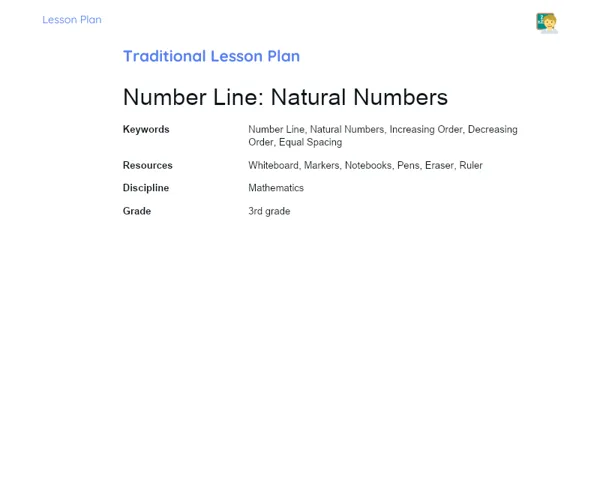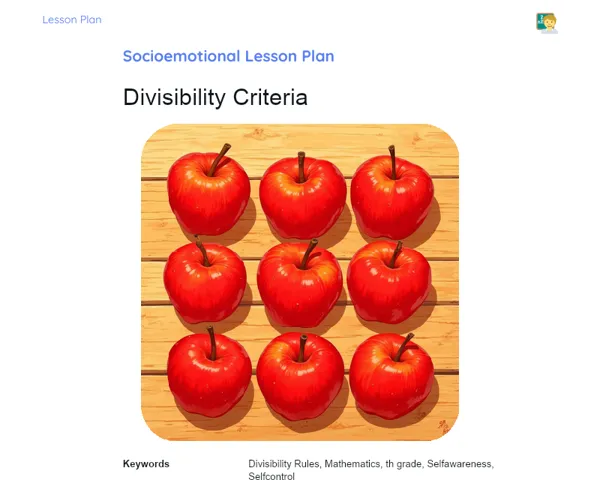Lesson Plan | Active Methodology | Triangles: Similarity
| Keywords | Triangles, Similarity, Proportion, Problem Solving, Interactive Activities, Group Work, Practical Applications, Engagement, Critical Thinking, Mathematical Communication |
| Necessary Materials | Sheets of paper, Large poster boards, Pens or pencils, Scissors, Envelopes, Printed clues, Token prizes, Kits with paper triangles of different sizes |
Premises: This Active Lesson Plan assumes: a 100-minute class duration, prior student study both with the Book and the beginning of Project development, and that only one activity (among the three suggested) will be chosen to be carried out during the class, as each activity is designed to take up a large part of the available time.
Objective
Duration: (5 - 10 minutes)
This stage is vital for directing both students and teachers towards the learning goals of the lesson. By clearly outlining what is to be achieved, learners can more effectively prepare and revisit earlier content. Moreover, this section aligns expectations and ensures that both the proposed activities and classroom interactions focus on achieving specific objectives.
Objective Utama:
1. Help learners grasp the idea of triangle similarity, recognising their properties and applying them in various mathematical situations.
2. Enhance the ability to calculate side ratios of similar triangles, using this skill to tackle real-life and theoretical problems.
Objective Tambahan:
- Cultivate critical thinking and logical reasoning skills through problem solving related to triangle similarity.
Introduction
Duration: (15 - 20 minutes)
The introduction serves to connect students with what they’ve previously learned, using problem scenarios that promote critical thinking and the practical application of triangle similarity knowledge. It aims to illustrate the topic's relevance in the real world, enhancing interest and awareness of the importance of mathematical study in both daily and professional contexts.
Problem-Based Situation
1. Imagine you have a scale map where the actual distance between two cities is 300 km and it's represented by 5 cm on the map. How would you use triangle similarity to calculate the map distance between two other cities?
2. Consider two similar triangles, where one has a side measuring 10 cm and its corresponding side in the other triangle is 5 cm. If the hypotenuse of the first triangle is 15 cm, what would be the hypotenuse of the second triangle? Use proportion to find the answer.
Contextualization
Understanding triangle similarity is not just important in maths; it has numerous practical applications in daily life such as engineering, architecture, and even art. For example, architects use similarities to design structures that are aesthetically pleasing and well-proportioned. Additionally, the history of mathematics is filled with instances where the study of the similarity of geometric figures has led to significant theories and solutions to complex problems.
Development
Duration: (70 - 80 minutes)
The development stage allows learners to practically apply triangle similarity concepts they’ve studied earlier. By working in groups, they reinforce collaborative learning and communication while enhancing problem-solving and critical thinking skills. This hands-on, playful method aims to consolidate theoretical knowledge in a meaningful and enjoyable manner.
Activity Suggestions
It is recommended that only one of the suggested activities be carried out
Activity 1 - Mathematical Expedition: The Treasure of Similar Triangles
> Duration: (60 - 70 minutes)
- Objective: Apply the concept of triangle similarity to solve practical problems and foster teamwork.
- Description: In this activity, learners will form groups of up to 5 and embark on an 'expedition' around the classroom to uncover 'clues' leading them to a hidden 'treasure'. Each clue ties to a similar triangle, requiring the use of proportion to solve problems and progress.
- Instructions:
-
Divide the class into groups of up to 5 students.
-
Give each group an envelope with the first clue and a drawn triangle on a piece of paper.
-
Subsequent clues are hidden around the classroom, each associated with a mathematical problem relating to triangle similarity.
-
To proceed to the next clue, groups must correctly solve the problem and report their answer to the teacher.
-
The group that solves all clues and finds the 'treasure' first will win a small token prize.
Activity 2 - City Builders: Planning with Triangles
> Duration: (60 - 70 minutes)
- Objective: Understand and apply triangle similarity in urban design, while developing presentation and creative skills.
- Description: Learners, organised in groups, will design a city on a large poster using paper triangles of different sizes. Each group must ensure that the streets, buildings, and public spaces are in similar proportions, applying triangle similarity principles.
- Instructions:
-
Arrange students into groups of no more than 5.
-
Hand out kits with paper triangles of various sizes and a large poster board to each group.
-
Explain that each group must create a city on the poster with triangles placed to ensure proportionate similarity across different areas.
-
Each group must present their project at the end, discussing their design choices based on triangle similarity.
-
Conduct a vote to choose the project that best embodied the mathematical concepts.
Activity 3 - Similarity Detectives: Solving Mathematical Mysteries
> Duration: (60 - 70 minutes)
- Objective: Encourage students to resolve complex practical problems creatively and playfully using triangle similarity.
- Description: In this fun activity, learners play detectives tasked with solving 'mysterious mathematical crimes' through the lens of triangle similarity. Each 'crime' involves a mathematical problem that must be solved to 'catch the culprit'.
- Instructions:
-
Split the class into groups of up to 5 students.
-
Present them with a 'crime scene' involving similar triangles, like a theft in a museum with only a drawing of triangles left by the thief as a clue.
-
Groups must apply triangle similarity to solve problems and continue in the 'investigation'.
-
Each problem they solve leads to a new 'clue' getting them closer to catching the 'criminal'.
-
The first group to solve all problems and 'capture the criminal' wins.
Feedback
Duration: (10 - 15 minutes)
This feedback stage aims to cement learning by allowing students to articulate their understanding and hear from their peers. This exchange of ideas reinforces the comprehension of triangle similarity concepts and promotes mathematical communication and reasoning skills. Moreover, discussing challenges and successes allows students to gain valuable insights into different problem-solving approaches.
Group Discussion
Kick off the group discussion by inviting each group to share what they discovered and how they resolved the activities. Ask each group to select a representative to give a brief overview of their process and learning. Encourage learners to discuss various approaches and solutions encountered, including how triangle similarity theory was implemented.
Key Questions
1. What were the main challenges faced in applying triangle similarity during the activities?
2. How did you determine the best strategy for solving the given problems?
3. Were there any moments where triangle similarity led to unexpected insights or more efficient problem-solving?
Conclusion
Duration: (5 - 10 minutes)
The goal of this conclusion stage is to solidify the knowledge students have gained throughout the lesson, linking theory to practice and highlighting the relevance of triangle similarity in real-world applications. This recap aids students in retaining content and recognising the importance of what they've learned, prepping them for future applications of the concept both academically and personally.
Summary
In this final stage, we will recap the concepts covered regarding triangle similarity, emphasising the properties and practical use of side proportions. We will review the theory of similarity and its applications, ranging from maps to architectural drawings, and even daily challenges.
Theory Connection
Today’s lesson effectively linked theory to practice. Through engaging activities like 'Mathematical Expedition', 'City Builders', and 'Similarity Detectives', students could actively apply the theoretical concepts explored at home, showcasing how triangle similarity is relevant and useful in real-life scenarios.
Closing
Understanding triangle similarity has value beyond academia; it plays a key role in everyday issues, from arranging spaces efficiently to interpreting maps and scales. It serves as a crucial tool for solving problems and making informed decisions.


